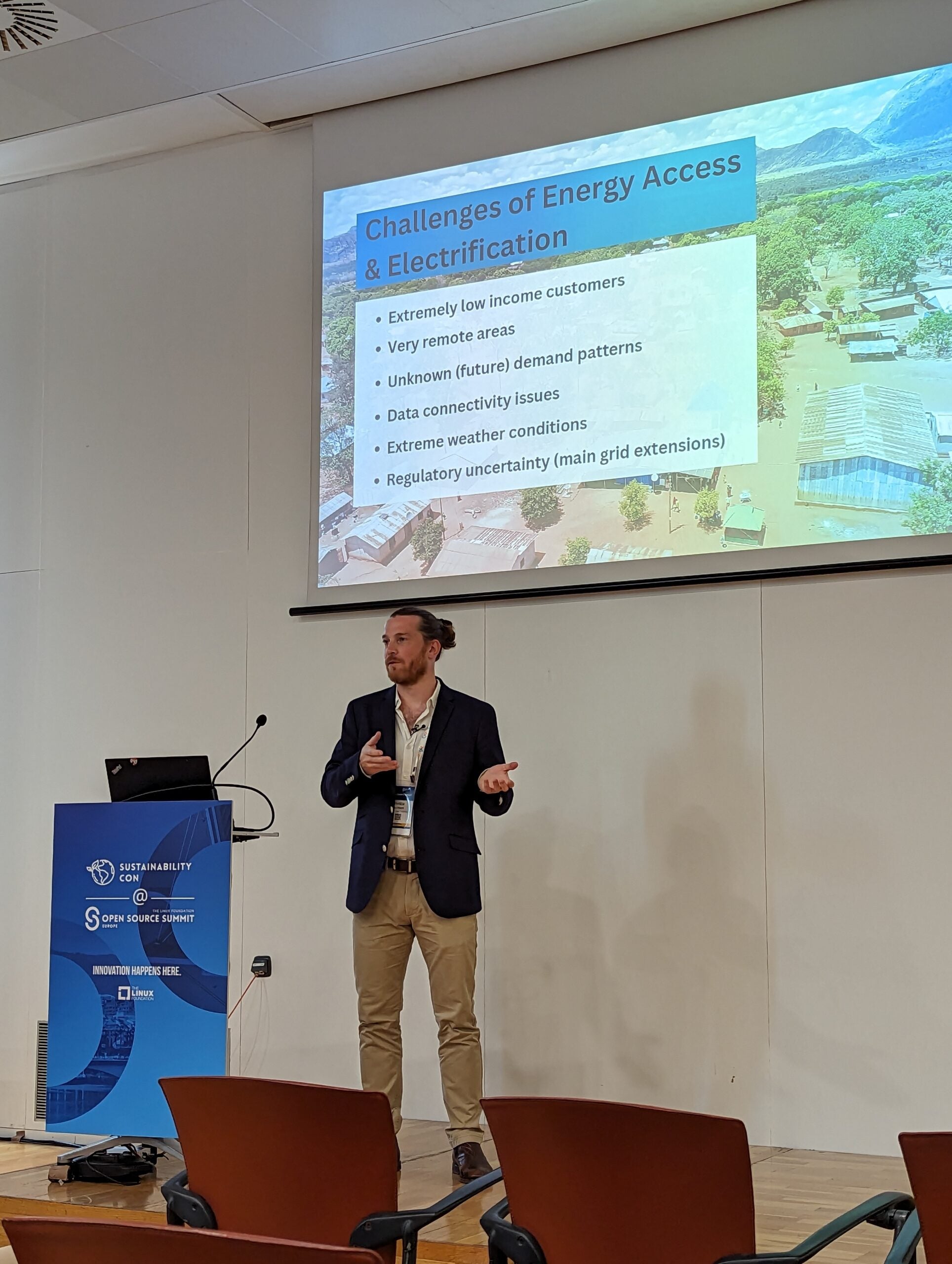Open Source Summit Europe 2023 Recap: Open Source for Energy Access: Accelerating Progress through Innovation
Energy access is a fundamental need for modern society, yet a significant portion of the global population still lacks reliable access to electricity. Vivien Barnier, representing the EnAccess Foundation, shed light on this issue during his presentation at the Open Source Summit Europe (video follows below). The talk focused on how open source innovations can drive greater interoperability and efficiency in the quest to expand energy access. Here’s a summary of the key insights from Vivien’s session:
The Power of Collaboration
Vivien emphasized that open source embodies the spirit of collaboration. In the context of energy access, collaboration is paramount. He stressed that tackling the issue of energy access requires concerted efforts from various stakeholders, including governments, organizations, and the open source community. Open source principles facilitate this collaboration, fostering an environment where people work together, share knowledge, and learn from one another.
The Challenge of Energy Access
The presentation began with a stark reminder of the energy access challenge. Despite significant progress over the past decade, there remains a substantial number of people without access to electricity, especially in remote and underserved regions. This deficiency poses a significant obstacle to achieving UN Sustainable Development Goal 7 (SDG7) – ensuring affordable and clean energy for all by 2030.
Stagnation Amidst Growth
One surprising revelation was the stagnation in energy access efforts. While many have worked tirelessly to connect more people to the grid, the challenge continues to grow due to population growth outpacing electrification efforts. This situation underscores the urgency of finding innovative solutions to bridge the gap and accelerate progress.
The Financial Hurdle
A major roadblock in achieving SDG7 is the massive financial gap. To meet the goal by 2030, we would need three times the annual investment currently being made. Africa, in particular, requires substantial investments. The current level of funding is only a fraction of what is needed to bring electricity to all corners of the continent.
The Role of Open Source Innovation
Vivien made a compelling case for the pivotal role of open source technology in addressing these challenges. Remote and underserved areas often face unique obstacles like extreme weather conditions, unreliable data connectivity, and regulatory uncertainties. These challenges demand innovative solutions. Open source technology, with its adaptability and collaborative nature, is ideally suited to create and share solutions tailored to specific needs.
Real-world Examples
Vivien highlighted real-world projects that demonstrate the potential of open source in the energy access sector. One such project, “Open PayGo Token,” disrupted the industry by promoting interoperability among various stakeholders, leading to cost savings and expanded access to energy.
The Call to Action
The presentation concluded with a call to action. Vivien encouraged the open source community to actively engage in addressing the energy access challenge. He welcomed collaboration, suggesting that the collective expertise of the community could be harnessed to develop innovative solutions. He also mentioned that the EnAccess Foundation is open to collaboration and is actively working to bridge the gap between the African and European open source communities.
